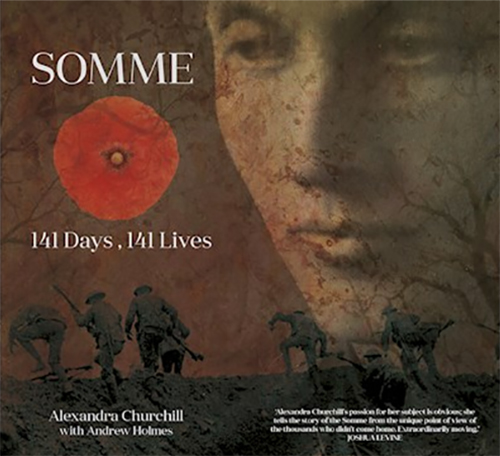Somme: 141 Days, 141 Lives
Book Review

Somme: 141 Days, 141 Lives, Alexandra Churchill and Andrew Holmes, The History Press, 2016, hardback, £25.00, 240 pp, ISBN 9780750965323
This deeply reflective, beautifully produced volume has been published to commemorate the centenary of the Battle of the Somme and focuses upon the experiences of 141 fallen casualties who over 141 days revealed the full scope of the battle which claimed some 623,907 allied men of whom 72,000 would never be found or identified. Alexandra Churchill’s poignant photographs of the pristine Thiepval Memorial to the Missing on the Somme and Andrew Holmes’s photograph of the Stone of Remembrance amongst a sea of headstones at Delville Wood Cemetery are juxtaposed with more gruesome archival images of shell bursts during artillery efforts at wire cutting, a tunneller in action, men of the Wiltshire Regiment advancing with bayonets drawn, other men attempting to dig in at Delville Wood in the summer of 1916 and dishevelled but not dispirited men of the Leicester Tigers relaxing in the aftermath of the Battle of Bazentin Ridge.
All classes and ranks are represented including soldiers from both the British Expeditionary Forces and each Commonwealth country together with relatives left at home such as Billy Congreve’s widow with her baby daughter born eight months after her husband’s death Soldiers’ stories featured in the book include twenty-two year old twin brothers Frank and Herbert Bindoff, who fought for the 22nd Manchester Regiment and both died from the same artillery shell explosion on September 2nd; Rugby player Sergeant Reginald James Minahan of the 1st Gloucestershire regiment who continued to play scratch games in his free time until he was killed in a German attack on July 25th and Father George and son Robert Lee who fought together for the 156th Brigade Royal Field Artillery and died on the same day. Many reveal the camaraderie of a battle, which saw the first and the last widespread use of the Pals Battalions, which will be the focus of the British Legion’s commemorations in the year of the Somme’s hundredth anniversary.
Finally, a map of the Somme battlefield of 1916 and another showing the locations of some of the final resting places of those whose stories featured in the book, serve as book ends this detailed and poignant selection of images and stories which descendants and relatives of those included will no doubt wish to own as a poignant record of a battle, which produced such a catalogue of misery, in ‘one of the costliest campaigns of the First World War’ which resulted in ‘tens of thousands of casualties on both sides, drawn from all corners of the world’. An index and a bibliography of personal and national archives, newspapers and periodicals and secondary literature consulted are appended as aids to enquiry and further research.

